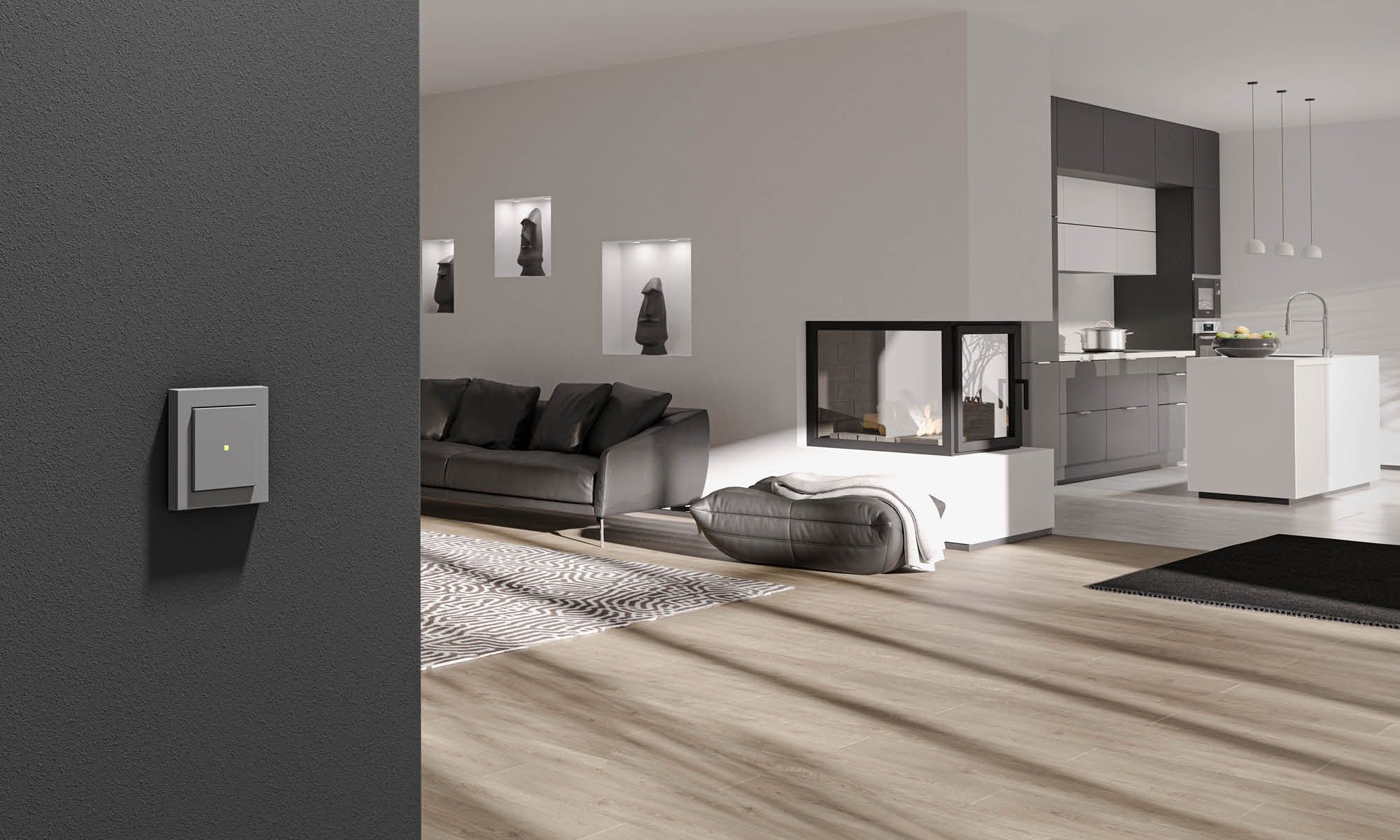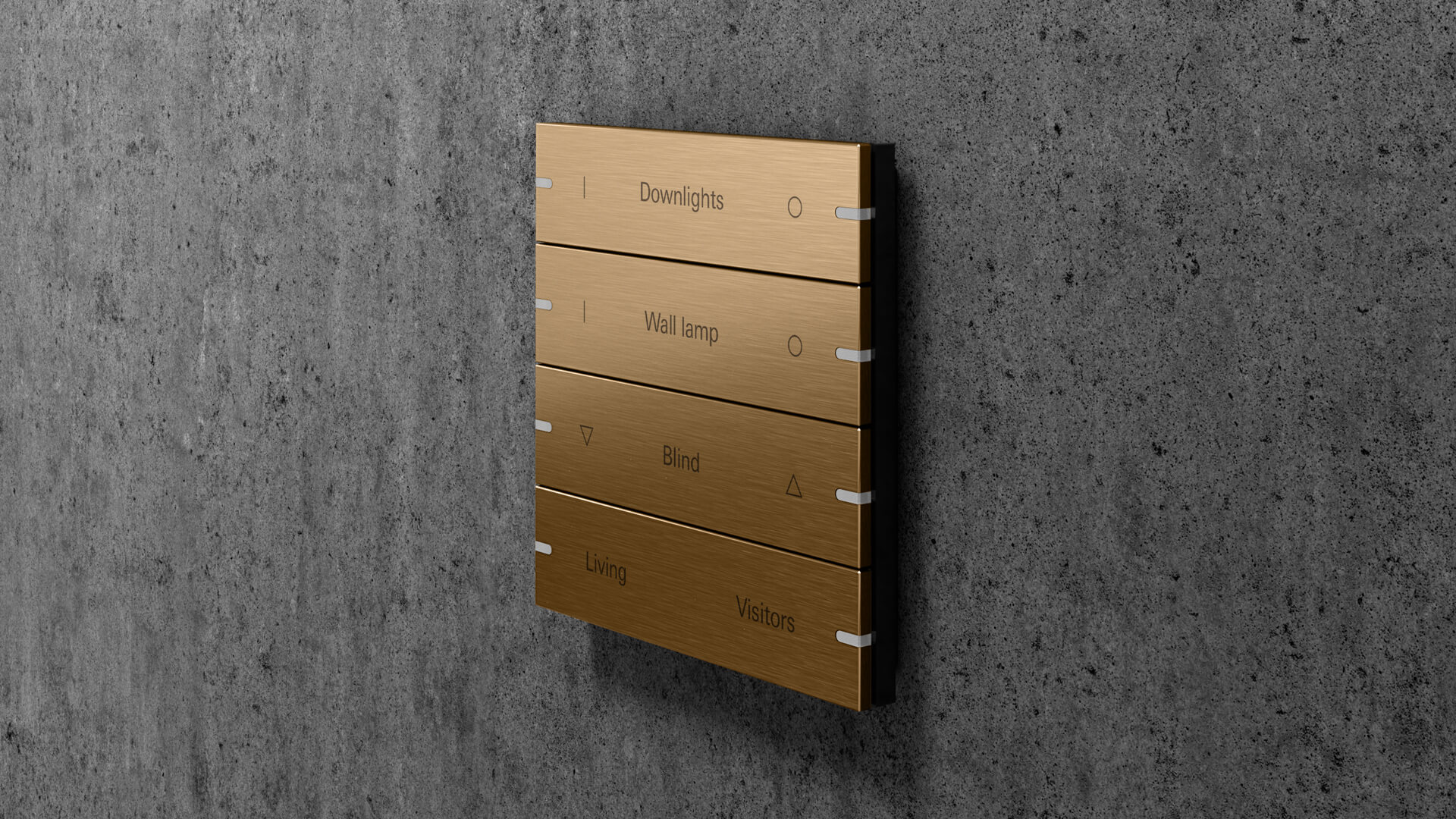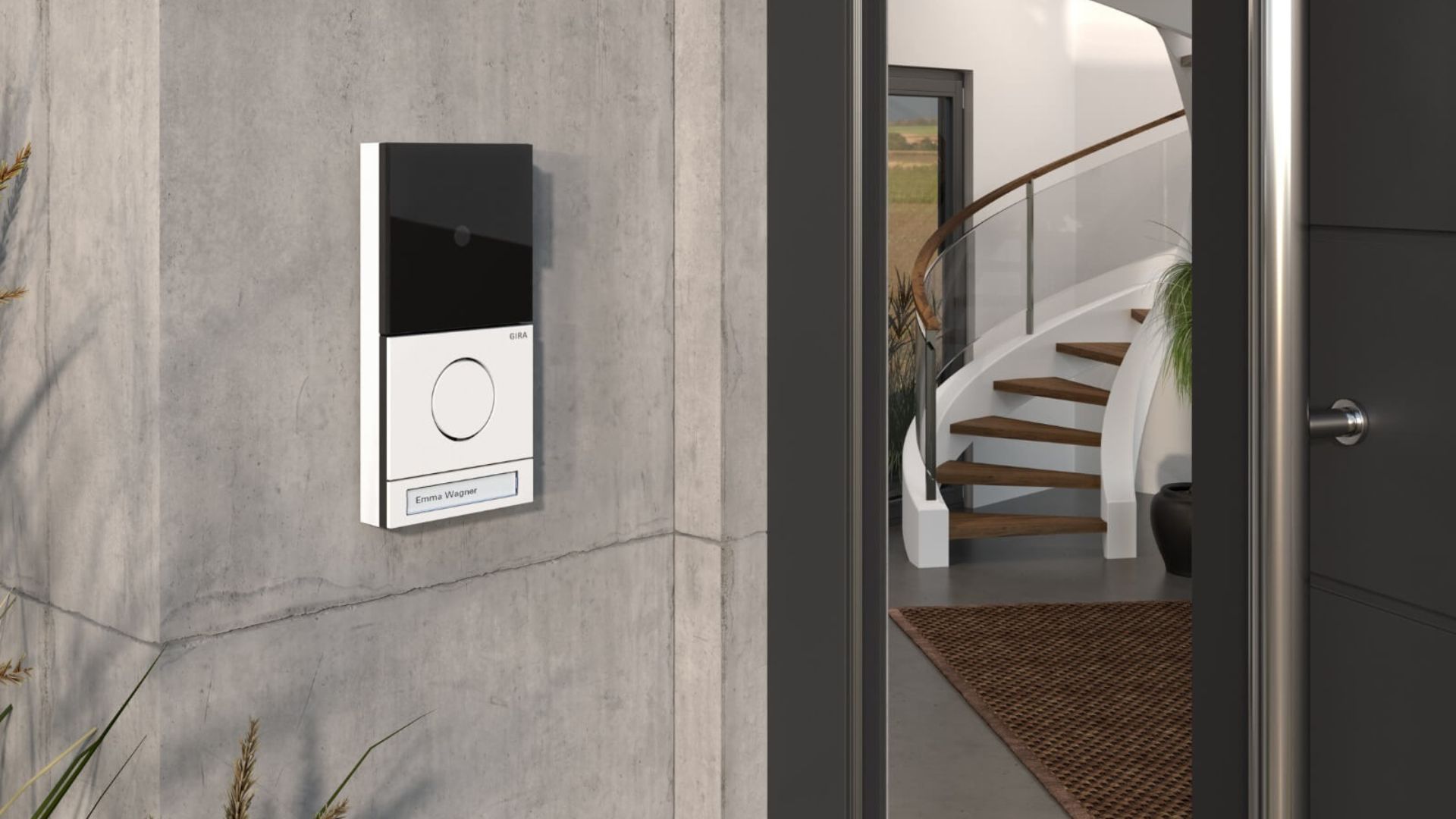
From new builds to modernisations – KNX offers endless possibilities to bring more comfort, security, and energy efficiency into everyday life. But how does that work, exactly? And how can you use KNX to automate your own home? Here’s everything you should know before getting started.
If you want to make your house or flat smart, you can choose from a wide range of systems and products. To ensure that different options can be combined across different manufacturers, an international standard called “KNX” was established in 1990.
What does KNX mean?
Today, KNX (short for “Konnex“) serves as the international standard for connected building technology. Simply put: the term refers to the ways in which devices communicate and work together within a smart network. Since all components “speak the same language“, they can be integrated into uniform system. This so-called “bus” system allows you to control multiple functions through one central server. By now, more than 500 international companies – including Gira – continuously work on developing even more intelligent KNX home automation solutions as official partners.
Gira lab: What is a KNX Smart Home? Source: Gira
How does a KNX system work?
Imagine arriving at your house after a long, stressful day at the office: the lights in the hallway turn on as soon as you open the front door, the living room already has the perfect temperature, and your radio is playing your favourite broadcast. All this works with the help of three components:
sensors that give commands
actors that carry out commands
a green cable that connects all of them
Sensors can be measuring and operating devices such as buttons, motion detectors, temperature controllers, or weather stations. They collect data and send it to actors via telegrams. Behind the scenes, the bus system ensures that all lines of communication run smoothly and securely. In addition, KNX home automation requires a common interface (i.e. a server or hub) where all information exchanged between separate components converges.
Why is a central server important in KNX Smart Homes?
Theoretically, a KNX system can comprise an endless amount of functions and devices. If you already know that you would like to add a lot of applications, you should rely on one central server. It is the nodal point that connects the sensors‘ commands and the actors’ functional and consumption data.
Theoretically, a KNX system can comprise an endless amount of functions and devices. If you already know that you would like to add a lot of applications, you should rely on one central server. It is the nodal point that connects the sensors‘ commands and the actors’ functional and consumption data. Think of this server as the “brain” that enables you to configure highly complex KNX home automation processes – with different devices reacting simultaneously or in specific sequences. Using a security module such as the Gira S1, you can even control your KNX system from afar: it encrypts all lines of communication so that your personal data remain protected at all times.
Apart from these essential components, a KNX Smart Home offers a variety of further options. You could integrate a voice assistant, for example, to switch on lights or adjust the heating with a simple utterance.
What to consider when planning a KNX home automation
First and foremost, you should think about which functions you will need in the long run. A bus system requires more than the conventional 230 V installation for switches and socket outlets – namely the aforementioned ”green cable“ that is laid parallel to your normal power supply line. Separating these two lines (one for communication, one for energy supply) allows you to extend your system with various functions and devices. Apart from lighting, blinds, and heating, this includes:
First and foremost, you should think about which functions you will need in the long run. A bus system requires more than the conventional 230 V installation for switches and socket outlets – namely the aforementioned ”green cable“ that is laid parallel to your normal power supply line. Separating these two lines (one for communication, one for energy supply) allows you to extend your system with various functions and devices. Apart from lighting, blinds, and heating, this includes:
alarm systems
entertainment systems
photovoltaic systems
charging stations for electric vehicles
A major benefit of KNX home automation is that you don’t have to settle for one manufacturer. Since compatible products all speak the same language, you can freely combine and exchange components from different brands. This “interworking” principle makes KNX systems particularly flexible and therefore futureproof.
Who takes care of your KNX installation?
When it comes to electrical installations of any sort, you should always consult with a professional first. Setting up a KNX Smart Home requires the expertise of a certified system integrator: thanks to specific training, they can offer in-depth advice and install your network in line with all necessary standards and precautions.
Based on individual programming, each device learns what it has to do in certain situations. This enables you to adjust and extend your system anytime: if your personal preferences or living situation might change over the years, you can easily add more features.
How much does KNX home automation cost?
Of course, your budget plays a decisive role in planning a Smart Home. Prices can vary considerably, depending on several factors:
Of course, your budget plays a decisive role in planning a Smart Home. Prices can vary considerably, depending on several factors:
What kind of functions do you rely on in everyday life?
How many devices do you want to connect?
How big is your living space?
To calculate the total amount, you have to consider two kinds of expenses – the material itself (i.e. the actual products and their components) along with the services provided by your installer or system integrator. This includes laying the bus cables, installation and configuration, as well as giving you all necessary instructions.
Gira KNX: an all-round solution for next-level comfort
If you want to explore the full potential of smart living, the Gira KNX system will do the trick. Its compact server Gira X1 proves particularly convenient in single-family homes. Apart from motion detectors and switches, you can integrate a range of operating elements: the Gira G1, for example, makes it easy to keep an overview on all connected functions and devices. You can use the control unit to program scenes, configure time schedules, or change your current settings. Via the Gira Smart Home app – in combination with the Gira S1 – you can even access your network from afar.
Which kind of KNX installation is right for you?
In general, KNX home automation is suitable for anyone who wants a maximum degree comfort and security on a long-term basis. Even if you’re not planning a new build or extensive renovation anytime soon, you can still benefit from a smart network: the Gira KNX RF (short for “radio frequency”) system offers a wireless alternative for retrofittings in older buildings or rented flats. Since it requires no extra cabling, it can be installed without tearing walls open. All you need is a conventional 230 V installation – your RF operating top units for KNX are then mounted onto the same functional inserts used for the Gira System 3000.



